After reading this article on the origins of Christmas in America, find some information about a virtual Christmas in Old New York tour from Bowery Boys Walks.
There are many different ways to celebrate Christmas, a national holiday derived from the union of Christianity and capitalism. How one chooses to mark the occasion is a reflection of one’s own traditions and faith (or lack thereof).
Christmas can be intensely religious for some, not at all for others. It is ever evolving to fit the population’s needs.
However, if none of the present ideas work, then there is the Puritan way: don’t celebrate it at all.
Below: A 1659 notice forbidding the celebration of Christmas in the Puritan-led colonies
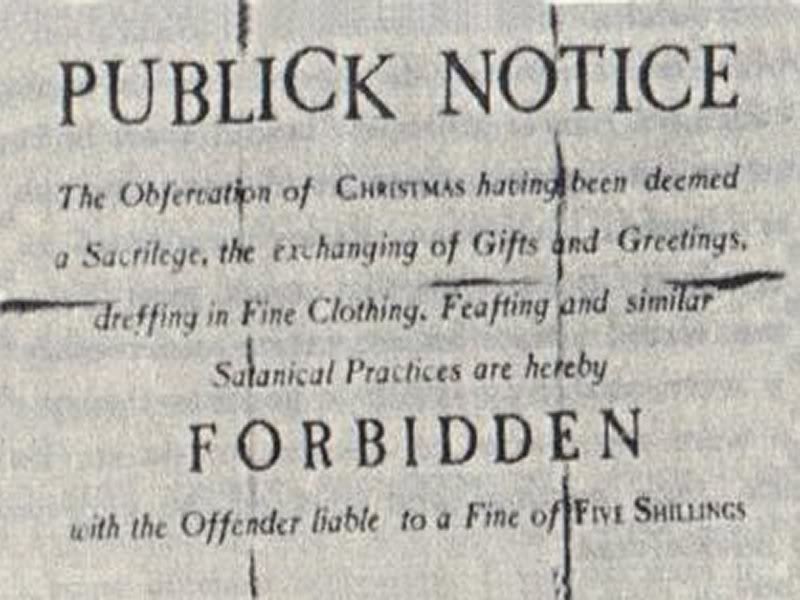
There was such opposition to the holiday within the first communities of the New World that it was outright banned among the Puritans of the Massachusetts Bay Colony.
Puritan leaders, ironically enough, took this abolition directly from the Bible; there was no celebration authorized in the book, and since it was doubtful Jesus was actually born on December 25, they considered the day a sinner’s excuse for debauchery.
As Puritans were by nature a homogeneous community, differing traditions were frowned upon, although modest observance of Christ’s birth was occasionally allowed. Generally speaking, December blew through the early English colonies with nary a festivity.
So where did the ingredients of modern Christmas first wash up onto the shores of North America? All signs point to New Amsterdam.
The New Netherland colony of the 17th century was not ruled by such strict restriction of belief.
New Amsterdam, New York’s precursor, was a company town. While laws suppressing the celebration of Christmas were on the books until 1681 up in Massachusetts and other places, down in New Amsterdam, rudimentary holiday traditions were openly, even casually, celebrated.
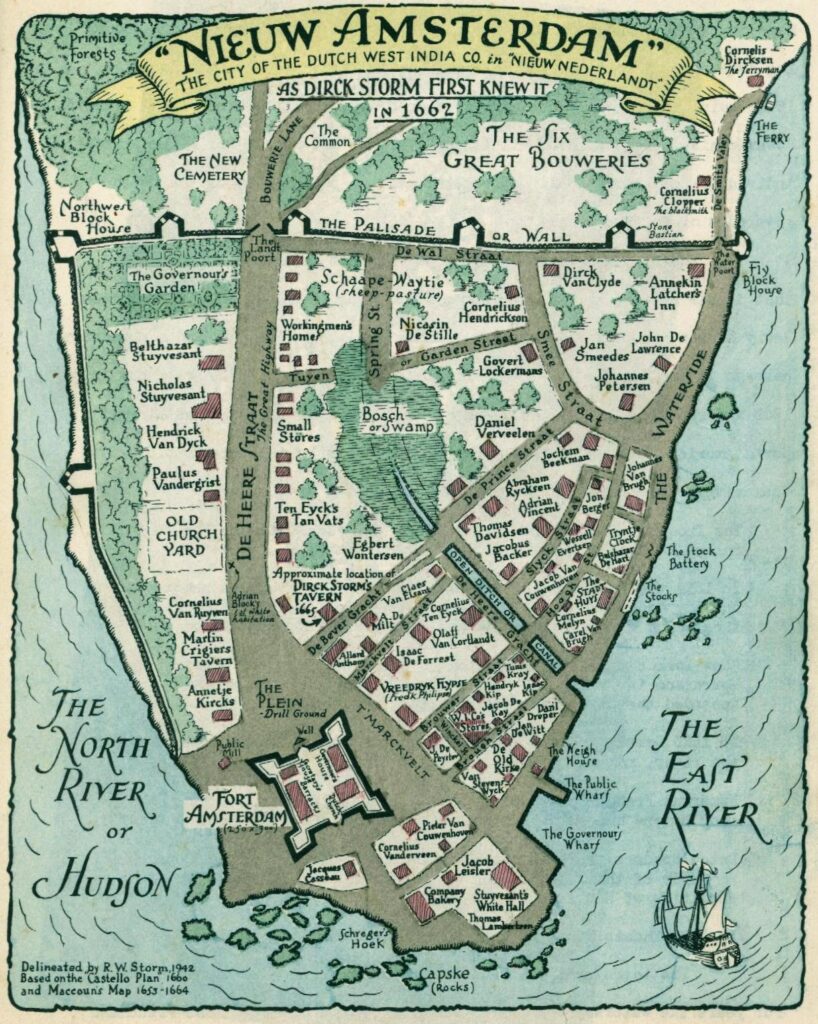
The settlers of Dutch New Netherland could theoretically celebrate how they wished.
There were certainly observations of Christ’s birth — called Kerstydt — but, it was often overshadowed by a more popular December holiday: Sinterklaas, a Dutch gift-giving tradition where children sat their shoes outside their homes to be filled by a visiting St. Nicolas on December 6th.
(Often, perhaps due to inclement weather, it made sense to have the shoes remain inside, and perhaps better still, to hang stockings near the fireplace.)
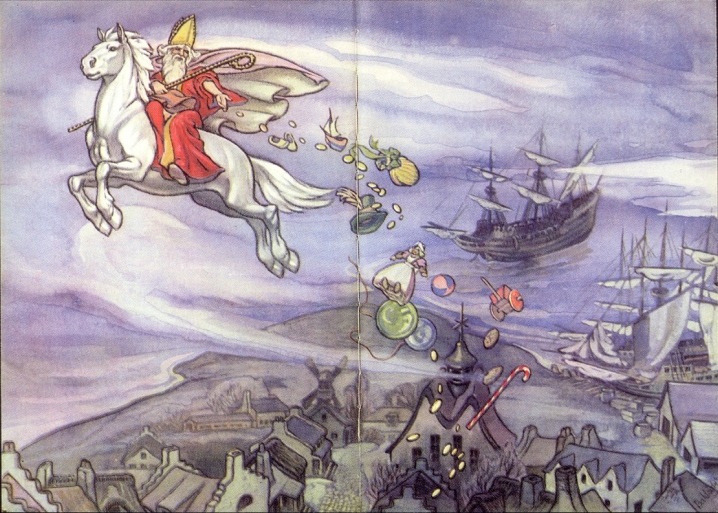
New Netherland’s population in 1624 was only 270 people, with few if any children. Over the next 40 years, however, dozens of families populated the outpost, passing down family customs and linking their distant home with the mainland.
With Dutch residents eventually outnumbering the others, their traditions became the most prevalent.
Combine that prevalence (with its extra-exciting gift-getting component) with the envy of the other non-Dutch children, and suddenly Sinterklaas becomes a highly anticipated holiday among the entire population of New Amsterdam.
This, despite Peter Stuyvesant‘s disgust at any holiday which promoted moral laxity (also known in some circles as fun).
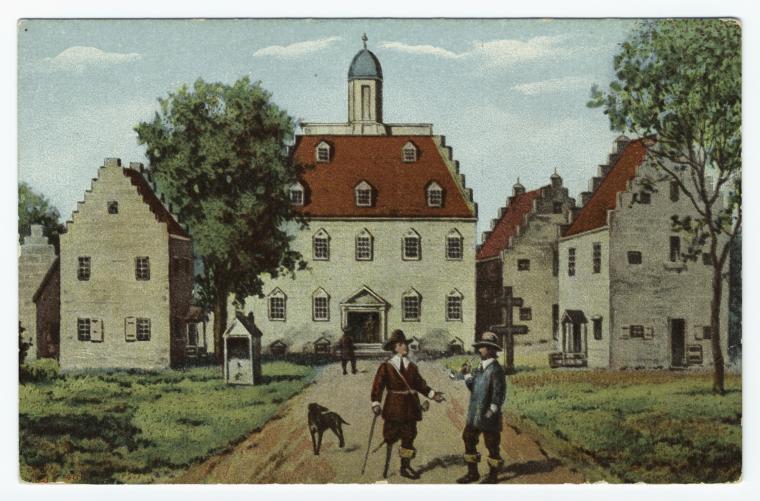
Or as author Russell Shorto describes it: “[A]mong the English, the French, the German, the Swedish families of Manhattan, pressure was brought to bear on parents, and the Dutch tradition was adopted and, later, pushed forward a couple of weeks to align with the more generally observed festival of Christmas.”
And New Amsterdamers didn’t stop at Christmas; the party kept going for weeks afterwards, throwing Manhattan’s very first New Year’s parties.
According to one source, “On Nieuw Jaar (New Year) and Kerstydt (Christmas) the Governor’s house was ablaze with candles and the young men and maidens danced in the ‘entry’.”
Official business was closed for weeks after, and “the burghers and their families spent much of their time in firing guns, beating drums, dancing, card-playing, playing at bowls or nine-pins and in drinking beer.”
No wonder Peter Stuyvesant hated holidays!

Over time, Christmas and Sinterklaas — one an observance of Jesus’ birth, the other honoring one of his most popular saints — would melt into each other. Even when the Dutch were kicked out of Manhattan in 1664, Sinterklaas was still celebrated in the region, further infused with English Christmas customs.
However, even as the British were expelled from Manhattan, American holiday traditions were still localized, often tied to one’s specific ethnicity and hardly unified.
It would take New York city leaders in the 19th century and the work of New York’s greatest writers to define new holiday symbols for a national audience.
In some Dutch pockets of upstate New York, the tradition of Sinterklaas is still celebrated today.
Want to hear more about the history of Christmas in New York? Take a Bowery Boys Walking Tour and get into the holiday spirit with a merry virtual stroll through The Big Apple!
On the Christmas In Old New York tour, guide Jeff Dobbins unveils the history of how the Big Apple became the center of all things Christmas from Macy’s to Rockefeller Center.
Book your tickets today! There are several dates available in the month of December. Get your tickets here.

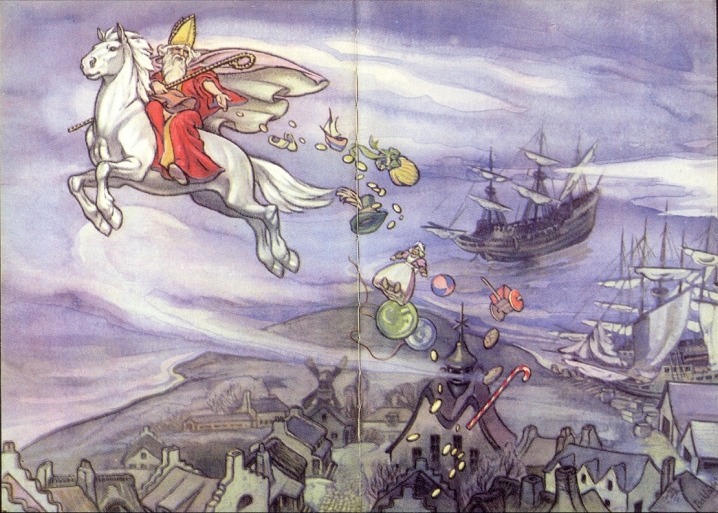
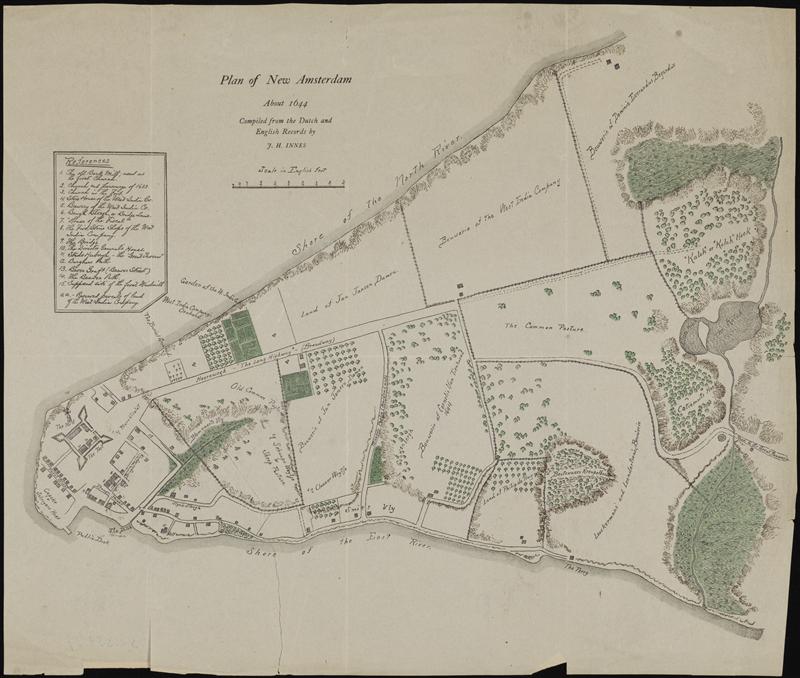
3 replies on “How Dutch New Amsterdam helped create the American Christmas tradition”
love the bowery boys have a great holiday and keep up the good work, love listening to you from scotland!
That’s a great article Greg and Tom! Greetings from The Netherlands. Jeroen
What would a dutch Christmas look like in 1867? Thanks